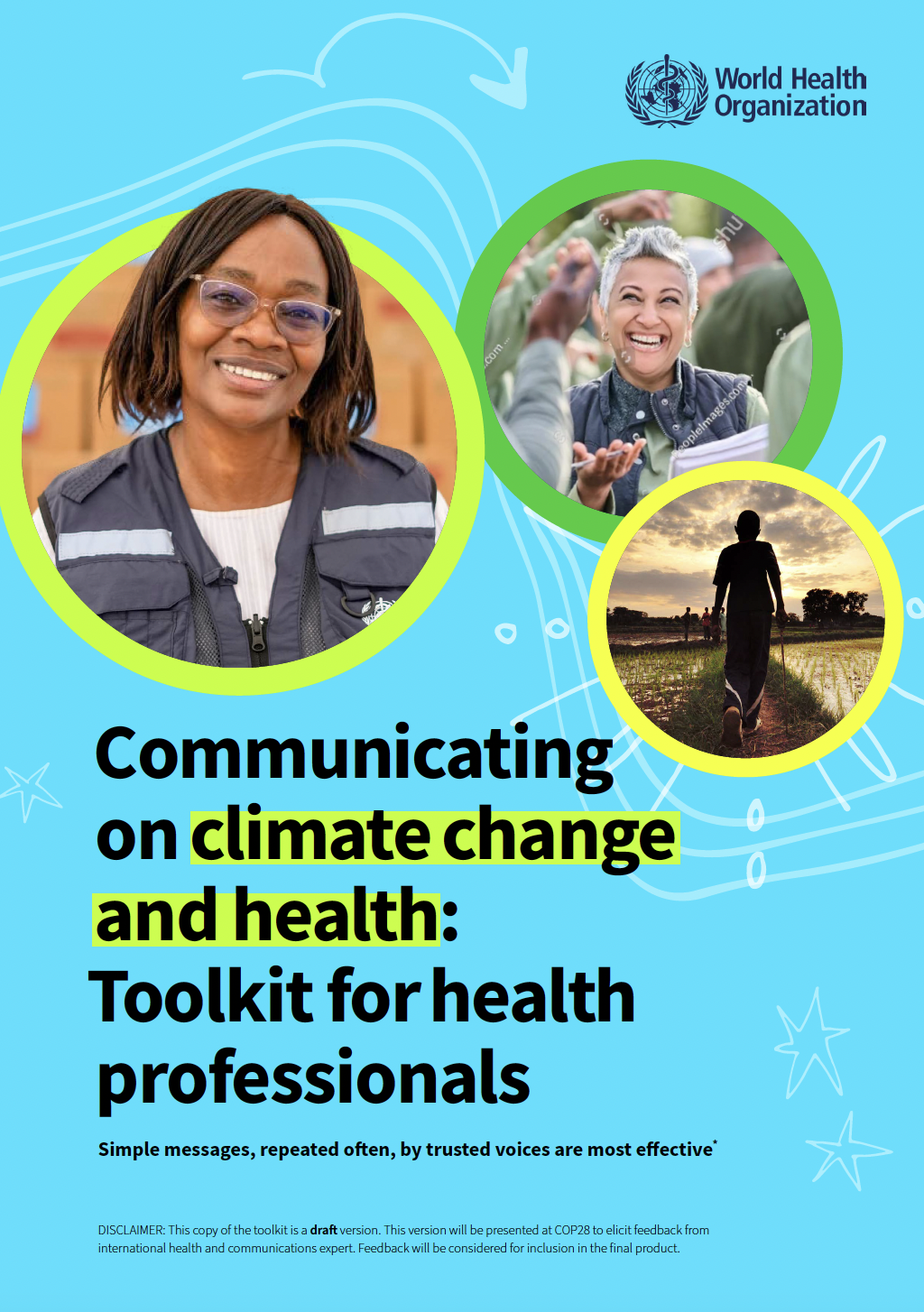Explore health-relevant side events, news and resources from the 2025 UN Climate Conference.
Health at COP30 >
Climate change is one of the biggest global health threats of the 21st century.
For many people, the negative health effects of climate change are already here. Implementing solutions to address climate change presents a huge opportunity to promote better health and protect people from climate-sensitive diseases.
Communicating the health risks of climate change and the health benefits of climate solutions is both necessary and helpful.
Health professionals are well-placed to play a unique role in helping their communities to understand climate change, protect themselves, and realize the health benefits of climate solutions.
This toolkit was developed to help health professionals, including doctors, nurses, allied health practitioners, public health officials, health researchers, students and more:
When we talk about climate change in this toolkit, we are talking about the ongoing increase in global average temperatures over the last 150 years, primarily through human-caused actions.
This temperature increase is a direct result of pollutants referred to as greenhouse gas emissions. These greenhouse gases are very good at trapping heat in the atmosphere. Burning fossil fuels is the main cause of rising greenhouse gas emissions.
When we talk about climate solutions in this toolkit, we are talking about the knowledge and technology we already have to slow down climate change and limit its harms. Mitigation and adaptation are the two climate solutions we refer to.
To slow down climate change, governments, businesses and industry, organizations, and households must reduce greenhouse gas emissions in our atmosphere and stop using fossil fuels – coal, oil, and gas. Actions to slow climate change are known as mitigation. An example of mitigation is heating and lighting our homes using renewable energy, rather than coal and gas.
To limit the harms of climate change, governments, agencies and organizations must implement initiatives which help people cope with the health harms of climate change (also known as adaptation). An example of adaptation would be planting trees across a city to improve air quality and reduce the health impacts of extreme heat.
There are many climate solutions which can differ between communities and countries, depending on what is economically, socially and culturally feasible. Some examples:
When we talk about health professionals* in this toolkit, we are talking about anyone who works in the healthcare sector or sciences. This includes (but is not limited to) doctors, nurses, allied health practitioners, public health professionals, health promotion professionals, health researchers and more.
* In this toolkit, the term ‘health professional’ is comparable to the WHO definition of ‘health and care workers’. Health and care workers are all those who are engaged in actions with the primary intent of enhancing health, including those who provide direct personal care services in the home, in health care and residential settings, and those occupations in academic, management and scientific roles, such as health researchers and health managers.